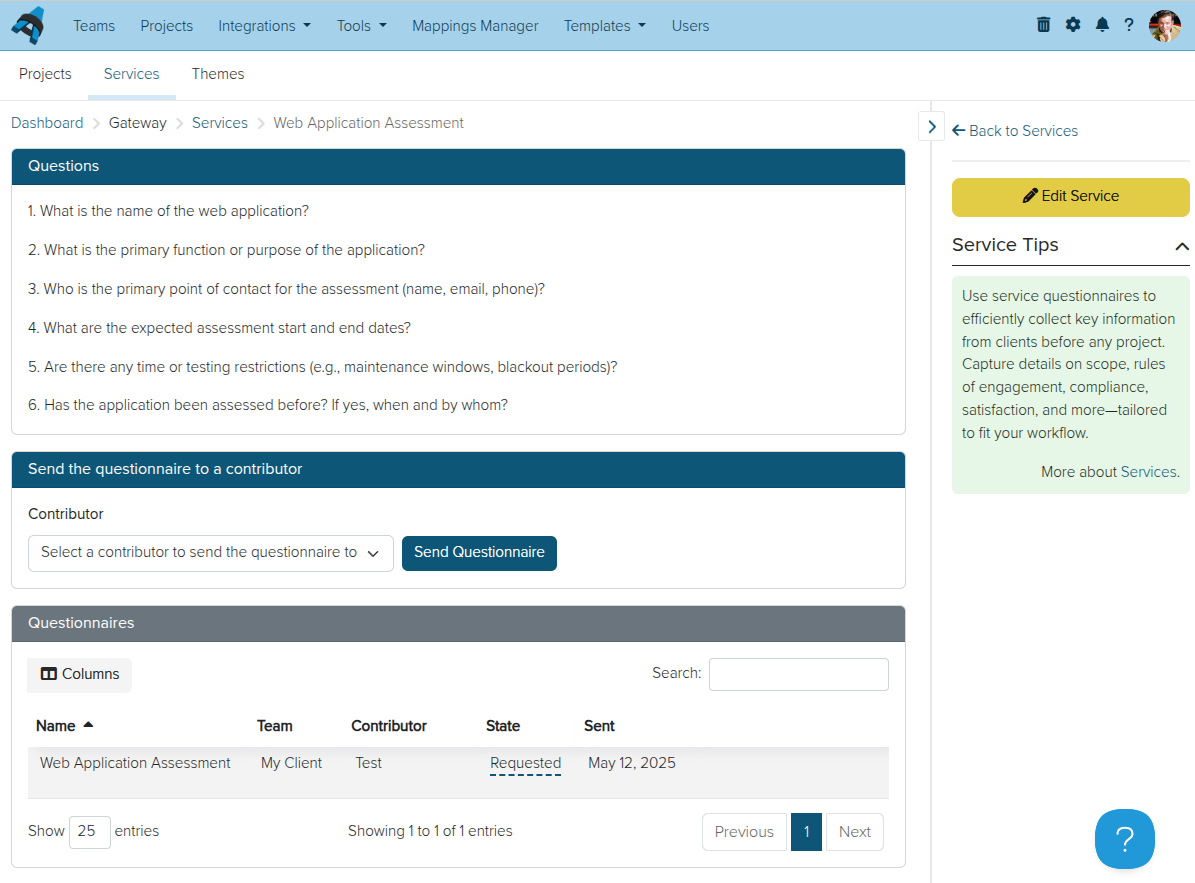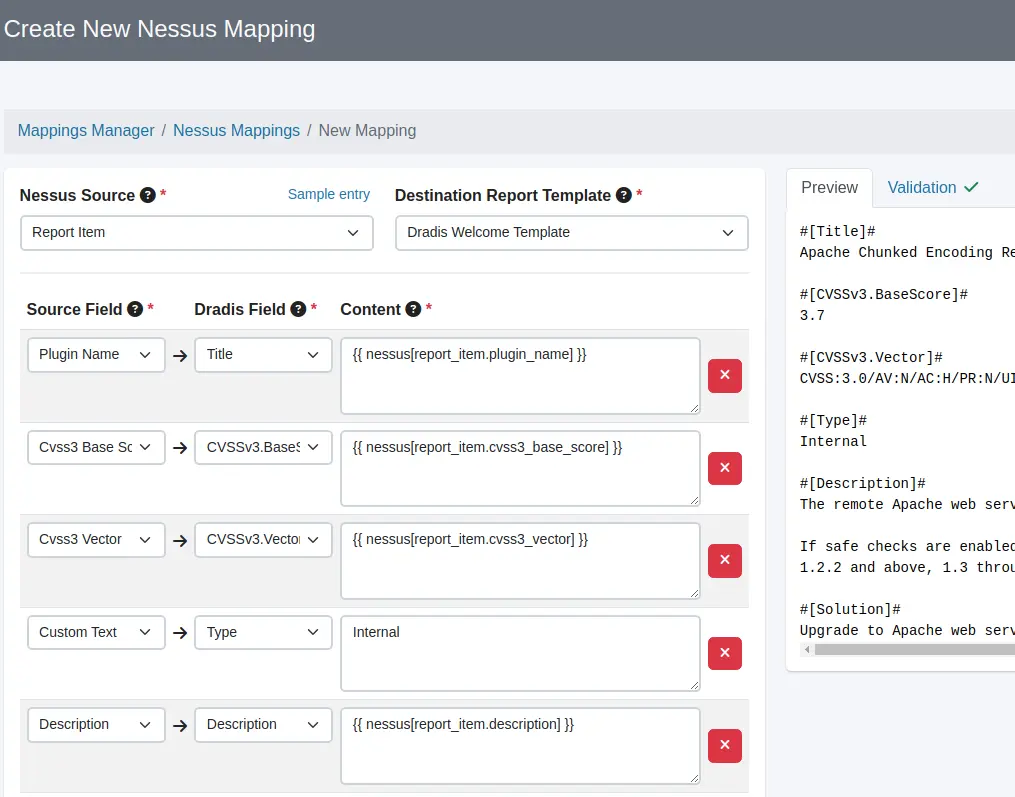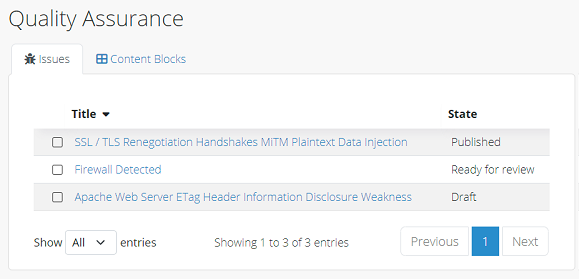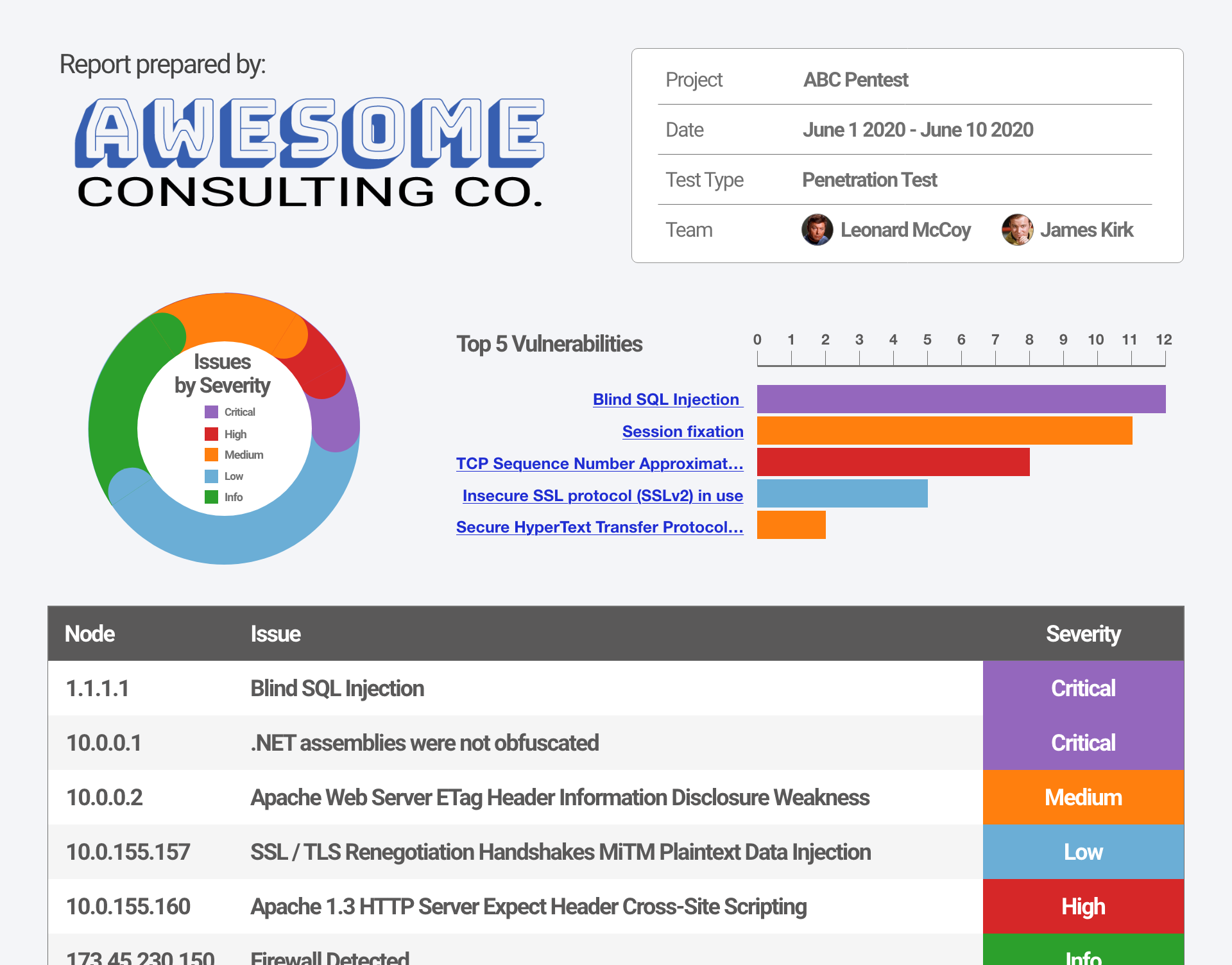Your Improved Workflow With Dradis
Deliver better insight to clients — faster
1. Collect Info Before the Project Begins
Create and assign structured, reusable questionnaires for contributors and clients (e.g. Rules of Engagement, Scope of Work).
Submissions are tracked in real time, ensuring you have a complete view of pre-engagement data before the first test begins.
- Build and reuse pre-engagement forms tailored to your methodology
- View all incoming responses in one place with submission timestamps
- Contributors can complete, review, and track their own assigned inputs

2. Import Data from Vulnerability Scanners and Pentesting Tools
Dradis integrates with your existing toolset — no need to introduce new workflows or learn unfamiliar formats.
The CSV importer allows for full control over data mapping. Bring in findings from proprietary tools or internal pipelines and format them consistently across projects.
- Parse and merge data from scanners like Nessus, Burp, Nmap, and OpenVAS
- Map CSV fields to report sections using a configurable importer
- Combine multiple sources (e.g., Burp XML + CSV) within the same project
3. Standardize and Structure Findings Automatically
Ensure consistency across reports by controlling how data is imported and displayed.
Use the Mappings Manager to define where each scanner field lands in your reporting template — no manual cleanup needed. Then enhance imported findings with the Issue Library, replacing default tool descriptions with your team’s approved language.
- Automatically map fields from Burp, Nessus, and other tools into your structure
- Standardize descriptions using your curated Issue Library
- Eliminate repetitive edits and enforce consistency across projects

4. Add Your Expertise
Automating the mechanical parts of reporting gives your team more time to focus on what matters: Analysis and remediation guidance.
Enrich each finding with context-specific annotations, visual evidence, and tailored recommendations.
Use Dradis to layer expert insight on top of automated data — turning tool output into client-ready deliverables that demonstrate value.

5. Collaborate with a Shared Project View
Dradis gives your team a unified workspace for every engagement — no version conflicts, no lost updates.
Whether you're on-site, remote, or splitting roles across testers, QA, and writers, everyone works from the same source of truth. Contributions sync in real time, with full visibility into project state, findings, notes, and methodology progress.
- Centralized workspace for field work, QA, and report writing
- Automatic syncing keeps remote and multi-role teams aligned
- Version tracking ensures changes are accurate and traceable

6. Review, Approve & Maintain Quality
Ensure only vetted findings make it into the final report.
Dradis provides a structured QA process with status tracking and change history. Reviewers can mark findings as approved, compare versions line-by-line, and maintain full oversight before anything is exported.
- Track review status across all findings
- Use version diffs to audit edits and maintain accuracy
- Keep QA visible and integrated into your workflow

7. Export Your Final Report
Generate polished deliverables in a click — fully aligned to your branding and structure.
Dradis exports reports in Word, PDF, Excel, and HTML using your own templates, complete with executive summaries, visuals, and formatted content pulled directly from project data.
- One-click exports to DOCX, PDF, Excel, and HTML
- Output includes findings, summaries, screenshots, and metadata
- Consistent formatting, every time

8. Share Findings in Real-Time
Let clients securely view findings and collaborate without email threads or exported docs.
Gateway provides a real-time portal for external stakeholders. Clients can view the latest findings, leave comments, and track remediation directly — all without leaving the platform.
- Real-time access to issues, status, and context
- Inline comments and feedback loops built-in
- Integrated remediation tracker for faster resolution












